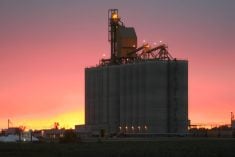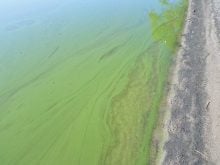MAKE THE MOST OF WHAT YOU HAVE
You likely farm the same land, give or take, that your parents, your grandparents or maybe even your great-grandparents did. The classification and type of land that you farm was determined long ago by where your ancestors decided to settle, and not because it’s necessarily your first choice of soil type. How your grandparents and parents treated that soil and how you continue to manage it, however, has both short-and long-term implications on the overall productivity of the land.
Read Also

Cancer agency reclassifies another herbicide ‘probably carcinogenic’
The WHO’s cancer research agency has now put atrazine, a herbicide well known to corn growers, in the same potential-hazard category where the agency put glyphosate.
When I started work on this soil management-themedGrainews issue, I wanted to move ahead of all the discussion on fertilizer rates and look more closely at the underlying success of any field — the soil itself. Akin to Stephen R. Covey’s Seven Habits of Highly Effective People bestseller, Jason Casselman’s cover story on what makes a highly productive field highlights my point perfectly. Casselman did what any inquiring mind would do, and that is he looked at the most productive land in his area and tried to find similarities between them. What he found was that agronomic decisions made on said land only make up a fraction of the productivity — the soil health is the driving force. Soil health, of course, is heavily influenced by larger-scale management decisions such as tillage type and intensity and crop rotation, and less influenced by nitrogen rates and harvest timing. Yet these are the areas of production farmers often focus on. You’ll also note that soil type only plays a role in what you’ve got to work with; types and texture of soil will limit productivity somewhat, but that doesn’t mean you can’t strive to have the most productive sandy soil possible, for example.
TO TILL OR NOT TO TILL
No discussion on soil management would be complete, of course, without looking at tillage and the absence of tillage. Scott Garvey was already chasing down stories of farmers dealing with wet and extremely wet conditions and found, surprisingly, that plowing wasn’t such a relic of the past but instead was still quietly being used in conventional cropping systems (see page 19 for more). He also attended a field day showcasing the capabilities of so-called vertical tillage. Farmers faced with tough, wet conditions are looking at ways and means of dealing with heavy trash, slow-to-drain acres and shallow hardpan. Vertical tillage seems to be one answer, but for those who adopted no till years ago is short-term tillage really a fix?
A LONG, SLOW PAYOFF
That’s the question I posed to Guy Lafond, researcher with Agriculture and Agri-Food Canada based at Indian Head, Sask. Several farmers in the eastern part of Saskatchewan have resorted to tillage in the past two wet years, but Lafond questions the effectiveness of this for such a short-term problem.
“This weather is extreme and not the norm — does cultivating the top three inches of soil really make a significant difference?” he says. What if we have a dry fall and spring, increasing the chances of wind erosion? There are very real reasons why farmers chose no till in the first place.
The long-term negative impact of tillage has been proven time and time again in Lafond’s research. Lafond heads up research looking at the benefits of long-term no-till systems. Short-term no-till plots have not been tilled for 11 years now, versus adjoining land that hasn’t seen tillage in three decades.
The differences between the fields still impress Lafond. He’s certain the 30-year no-till land is still improving. “We’re still seeing improvements on (this field),” Lafond says. Spring wheat yields are, on average, 14 per cent higher versus nine years of no till, and canola yields average 16 per cent higher. “The N-response curves, the soil carbon levels, the nitrogen-supplying power of the soil, everything we measure on this field is better,” he says.
Where do these benefits come from? In a word, organic matter. It’s oversimplifying a very complex topic, but no till leaves more biomass and thus nutrients/carbon on the land. Biomass and the resulting snow-trapping and water-conserving properties that stem from intact stubble combine to create the backbone on which soil is built — organic matter. Increase the soil organic matter content and you increase water-holding capacity as well as water-infiltration rates. You also increase nutrient-holding capacity, plus start to see spinoff benefits of a well-balanced population of soil flora and fauna (think faster nutrient breakdown and availability).
THREE STEPS TO BUILDING SOIL
While not every farmer in Western Canada is going to forgo tillage entirely, tillage is typically counterproductive when trying to improve land productivity. Rebuilding poorly managed and nutrient-depleted soil is a slow process, but one that pays dividends for years. Here are Lafond’s three steps for rebuilding soil:
Implement no till to protect the soil from further degradation, conserve moisture, increase the biomass grown which, in turn, builds the soil organic matter.
Add enough, or slightly more than enough N and P every year to grow the crop. A soil in the rebuilding phase should not be mined of nitrogen, or phosphorus for that matter.
Aim for high yields (as long as you’re supplying enough nutrients each year), stay on top of the weed spectrum and then wait. Remember to be patient; rebuilding soil takes a very long time.
Determining what’s in the soil and what’s been extracted year over year can be done with a well-executed soil test. Not all soil tests are created equal, of course, as the skill of the sampler, the handling of the sample and location of the sampling all play a role in the usefulness of the tests. For a full rundown on getting the most out of fall soil tests, read Leeann Minogue’s article on the topic on page 10.
AND NOW FOR A DISCUSSION ON MANURE
I’m well acquainted with manure (and before the comments from the peanut gallery start, it has little to do with my line of work). It all stems from an affinity for horses and the resulting heaps and mounds of manure that large animals kept in deeply bedded stalls create. Of course, more traditional forms of agriculture are no stranger to the manure dilemma — sure, it’s full of valuable nutrients and organic matter and is excellent for building soil health, but it’s also smelly, bulky and highly variable as a fertilizer source. How do you make the most of it?
Technology has brought us some excellent manure management strategies, like biodigesters, gasifiers and large-scale composting units. Still, manure is largely seen as a nuisance and something to be managed by livestock producers largely because grain farmers, who pay dearly for those same nutrients at the local retailers, need something uniform and easy to apply.
Work out of Manitoba is striving to address some of the biggest obstacles to more widespread (pardon the pun) use of manure in cropping systems. Variability and volume are two of the biggest questions to address; environmental implications, as with any nutrient application, is also high on the list. Angela Lovell has done a great job of summarizing where things are at with the latest research on manure use for this soil management issue. Read all about it on page 12.
After you do, I do hope you’ll consider using manure in your cropping system, especially if you’ve got a nearby neighbour looking to find a home for all those nutrients. Because poop is a terrible thing to waste — according to me, at least. Lyndsey














